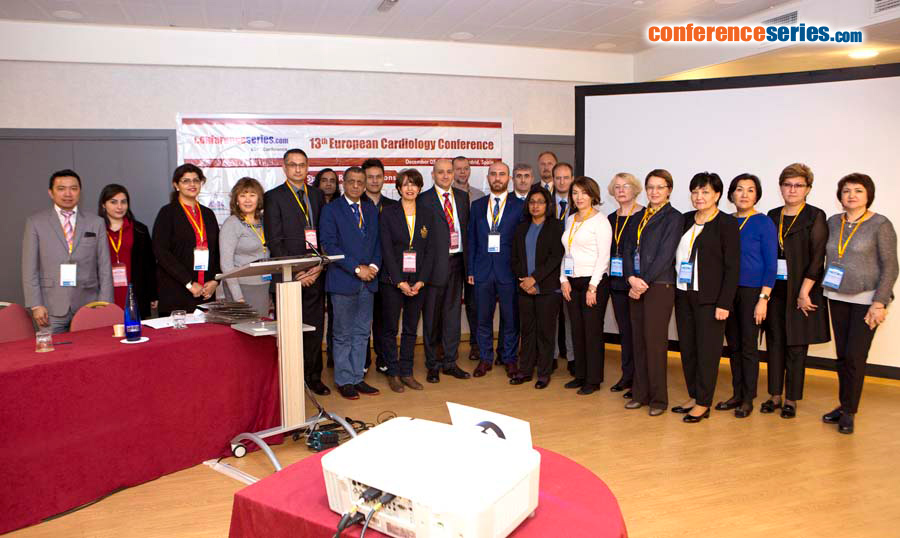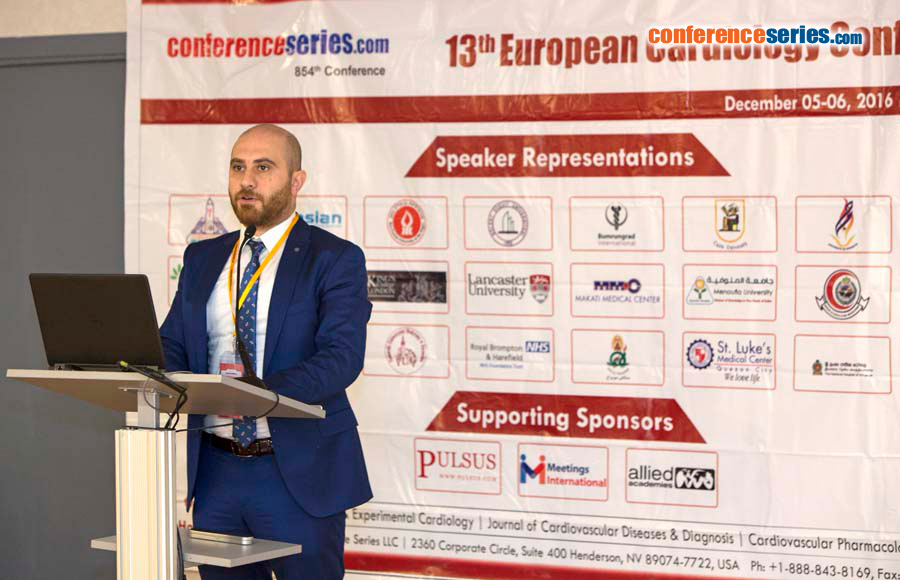
Ersoz Gonca
Bulent Ecevit University, Turkey
Title: A pharmacological study of a new spiro-cyclic benzopyran activator of the cardiac mitokatp channel on ischemia/reperfusion-induced ventricular arrhythmias
Biography
Biography: Ersoz Gonca
Abstract
Background/Introduction:4ı-(N-(4-acetamidobenzyl))-2,2-dimethyl-2,3-dihydro-5ıH-spiro[chromene-4,2ı-[1,4]oxazinan]-5ı-one (compound A) was synthesized as a new spiro-cyclic benzopyran activator of the cardiac mitochondrial ATP-dependent potassium (mitoKATP) channels. A previous study showed the anti-ischemic properties of Compound A (1).
Purpose: This study was performed to research the effect compound A on ischemia/reperfusion (I/R)-induced ventricular arrhythmias. In our previous study, we suggest that both mitoKATP channel activation and sarcolemmal ATP-dependent potassium (sarcKATP) channel inhibition confer protection against I/R-induced arrhythmias (2); therefore, we also aimed to test the hypothesis that a combination of mitoKATP channel activation and sarcKATP channel inhibition may be even more effective at decreasing ventricular arrhythmias.
Methods: We performed myocardial I/R by ligating the left main coronary artery for 6 minutes followed by loosening the bond at the coronary artery for 6 minutes in anesthetized rats. The experimental groups were as follows: (1) Vehicle control, (2) Compound A (3 mg/kg) (3) Compound A (10 mg/kg.) (4) Diazoxide (5) HMR 1098 (6) Compound A (10 mg/kg)+HMR 1098, and (7) Diazoxide+HMR 1098 group.
Results: Compoud A at a dose of 10 mg/kg decreased both the arrhythmia score and the total length of arrhythmias (P<0.01). Diazoxide at a dose of 40 mg/kg, a selective mitoKATP channel opener as a reference drug only decreased the total length of arrhythmias (P<0.01). Compound A at a dose of 10 mg/kg was more effective at decreasing the duration of arrhythmias than a dose of 3 mg/kg of compound A and diazoxide. The combination of both diazoxide and compound A with HMR 1098, a selective sarcKATP channel blocker, did not exhibit any additive or synergic effect on the antiarrhythmic effect of each drug alone.
Conclusion (s): These results reveal that compound A may have a dose-dependent antiarrythmic effect, which is more pronounced than the antiarrhythmic effect of diazoxide. Both mitoKATP channel activation and sarcKATP channel inhibition at the same time may not reveal any additive antiarrhythmic effect on I/R-induced arrhythmias.







